How Long to Cook 13kg Beef
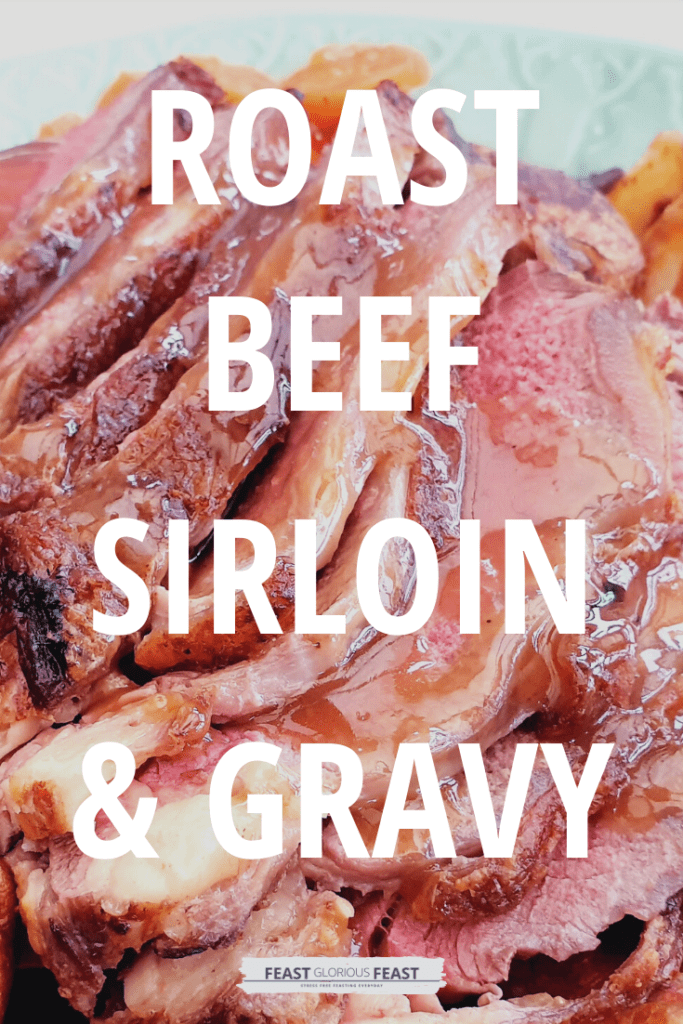
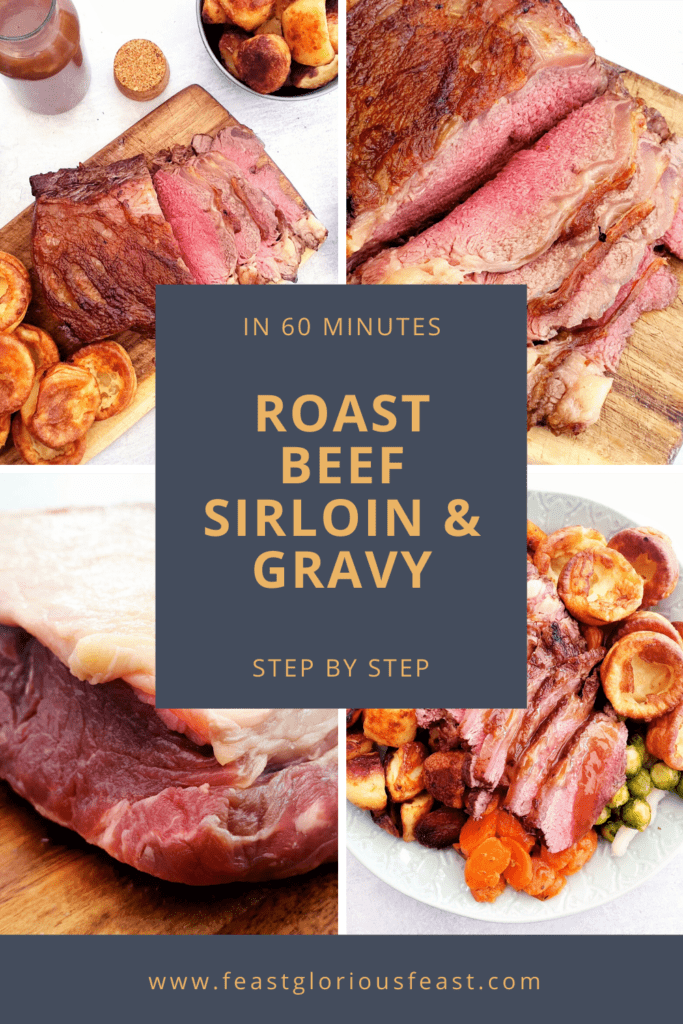

Roast Beef Sirloin is a quick cook and flavour packed joint which is ideal for Sunday Lunch. Or any meal! My Sirloin of Beef recipe serves 4, takes just 60 minutes and comes with perfect beef gravy too. Don't forget the Yorkshire puddings for the best roast beef dinner!
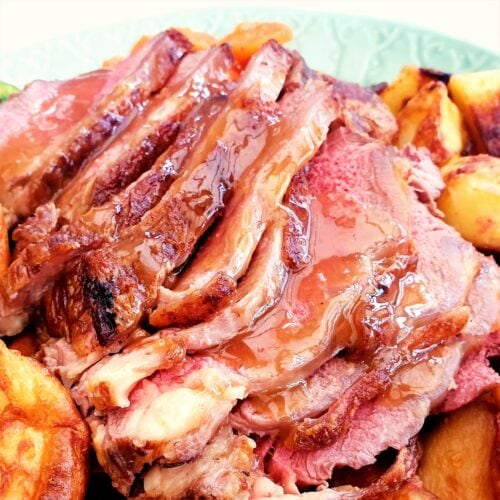
This post may contain affiliate links. Please refer to my Disclosures Page for more details.
If the French want to call the British "Le Rostbif" then I'm just fine with that. Along with many of our fab culinary traditions, roast beef a truly a star dish. And if other countries want to mock that instead of whacking a good slab of meat in the oven, then more fool them!
Now I absolutely love pork. Be it a slab of belly pork or a huge shoulder joint, I don't care, I'm in. And a good Roast Chicken is an absolute versatile classic which I make regularly. I even love a good Roast Turkey at Christmas. But whichever way you look at it, beef is truly the king of roasts.
Roast Beef is king for two reasons. Firstly it is absolutely delicious. And secondly, it can be pricey. I am especially a fan of Beef Rib which can set you back the price of a small car for a well reared and well hung piece of meat. So I don't have it very often and when I do, it is a real treat.
How to Make Roast Beef Sirloin – Step By Step Video
Why Use Sirloin for A Roast?
Cheaper cuts like topside, brisket and silverside are available. But I find their lack of decent marbling and fat off-putting. They are cuts that can be hugely disappointing. But I have recently discovered the sirloin cut. I am very familiar with sirloin steaks but have rarely come across it as a joint cut.
Sirloin can have a decent but not excessive layer of fat and a well reared and well hung piece of meat will be nicely marbled. It is that marbled fat that melts during cooking to create a lovely juicy piece of beef from the inside.
I also love to slice a joint into steaks and make my Grilled Sirloin Steak or simply buy them as ready prepared steaks.
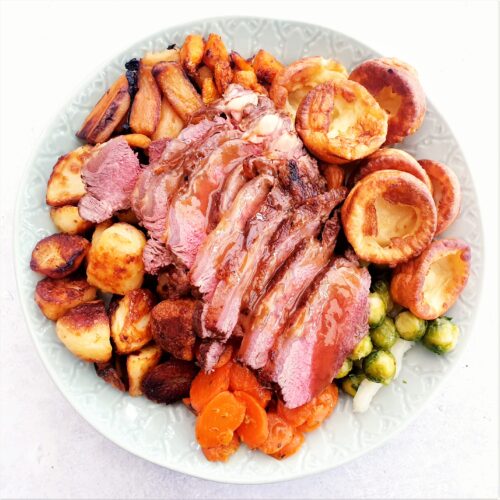
UK Sirloin vs US Sirloin
Sirloin in the UK is slightly different from sirloin in the USA. In fact, most beef cuts are different in the UK when compared to the US because of the way that beef is butchered. UK sirloin is from the area that the US get their short loin cut from. It is often called strip loin, new york strip or strip.
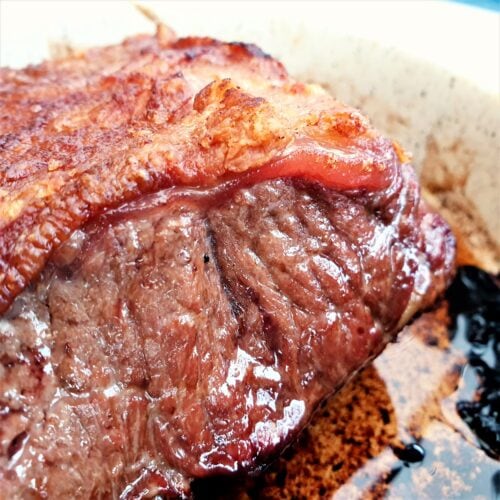
How to Serve Beef Sirloin & Gravy
Hot and with a roast dinner is very much the obvious answer. But it is important that the meat is well rested. I rest my sirloin for almost as long as I cook it in the oven. And whilst it gets covered with foil and cloth and kept near the cooker so heat is retained, a well rested piece of meat will never be red hot.
I've included the instructions for making a fuss free gluten-free gravy with this recipe. I serve this up last so it is piping hot when served. This way the whole dish is warmed slightly just before eating. Upstairs for thinking, downstairs for dancing people.
Whether you serve the whole joint at the table and then carve it or slice and serve it up, is up to you. It might also depend on whether the meal is an "everything in the middle and help yourself" sort of feast, a "come and get what you want out the kitchen" affair or a "here's your plate of food" situation.
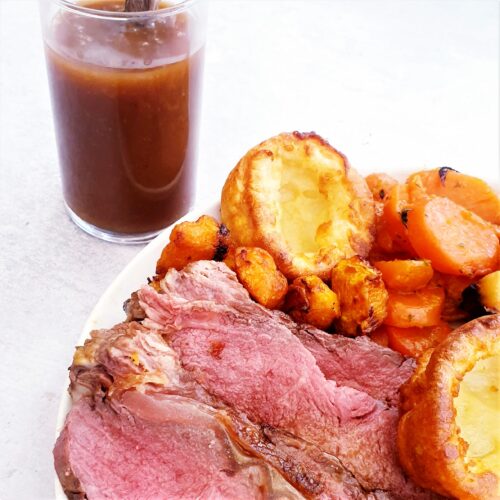
Make Roast Sirloin of Beef into a Feast
I truly believe that you can make any dish into a proper feast! Whether thats a feast for one after work on a Tuesday, a casual feast for four on a Friday evening or a feast for 12 for a special occasion!
A whole sirloin of beef is the centrepiece of an obvious feast. I like to call it a "Roast Feast" or a "Sunday Feast". But that's because I like to flog a dead horse with the name and concept of this website.
Most people are going to call this a Roast Dinner/Lunch or Sunday Dinner/Lunch. Whether it is a midday or evening meal is often a family specific decision and what you call it depends where in the UK you are!
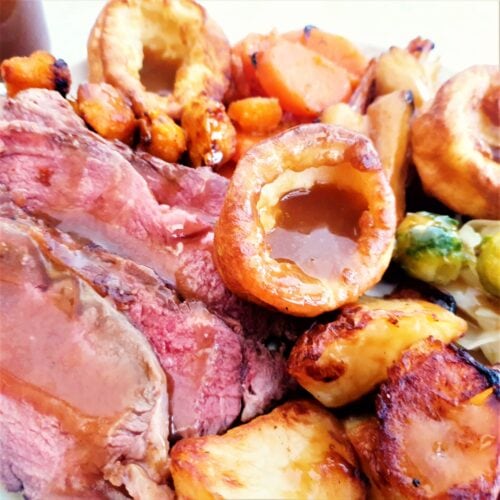
What else is included in that roast dinner also varies from household to household, cook to cook and region to region. And if you're anything like me, one roast dinner to another. I like to mix it up.
The Main Event
I will eat them with any roast dinner but even the traditionalists will generally make Yorkshire Puddings as an accompaniment to the meat and gravy. Some kind of potato usually comes next. Roast Potatoes are most common but mash potatoes or Rosemary Cubed Potatoes can happen instead or as well.
The Vegetables
Vegetables come next. I like to have at least one roasted vegetable like my favourite Parsnips. I will sometimes go for Roasted Sweet Potatoes instead or follow exactly the same recipe with butternut squash. Carrots are another given in my house. I especially love the buttery sweet glaze of Vichy style Carrots.
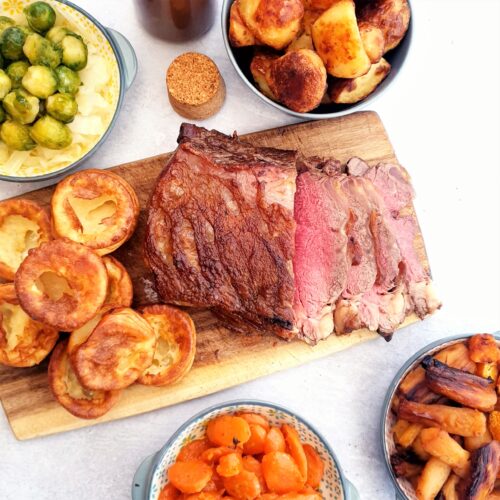
And then something leafy and green. Savoy cabbage is a particular favourite of mine. Simply boiled white cabbage or spring greens come a close second followed by sprouts or kale/cavelo nero.
The Extras
You then have extras like Sausagemeat Stuffing. A given for me with pork or chicken but not so much beef. If you like it, serve it! Cauliflower cheese is another well loved accompaniment. And horseradish sauce or mustard is the traditional accompaniment to beef.
And if you are really northern and British, you're also going to need a slice of bread and butter to mop up any gravy left on the plate! Try it, its great!
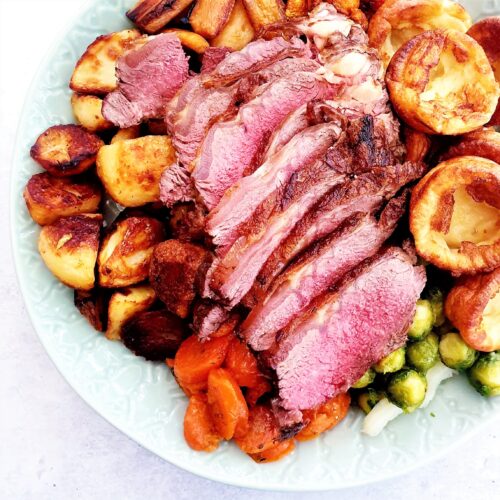

Don't miss my comprehensive collection of ideas for classic Christmas sides. I've included simple basic recipes and ways to level up each dish.
There is everything from roast potatoes, numerous stuffing ideas and red cabbage dishes to cranberry sauces and even a vegan gravy option.
Ingredients for Roast Beef & Gravy
Sirloin of Beef
I have talked about the cut of meat in the introduction section of this post.
The timings I have given relate to a 1.25kg joint. It looked a little paltry when I took it out the packaging but as soon as it hit the heat, it plumped up and gave enough meat to serve 4 without leftovers.
For a larger joint of meat, a longer cooking time will be needed. Although the searing stage will remain the same.
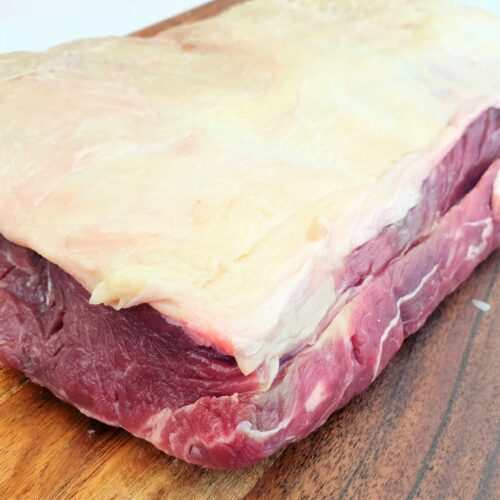
Sea Salt Flakes
Seasoning is key with a roasted joint of meat. Do not skimp on the salt. I use sea salt flakes but you can use what you have. Just make sure to use salt in one way or another. I do often sub garlic salt for an extra punch.
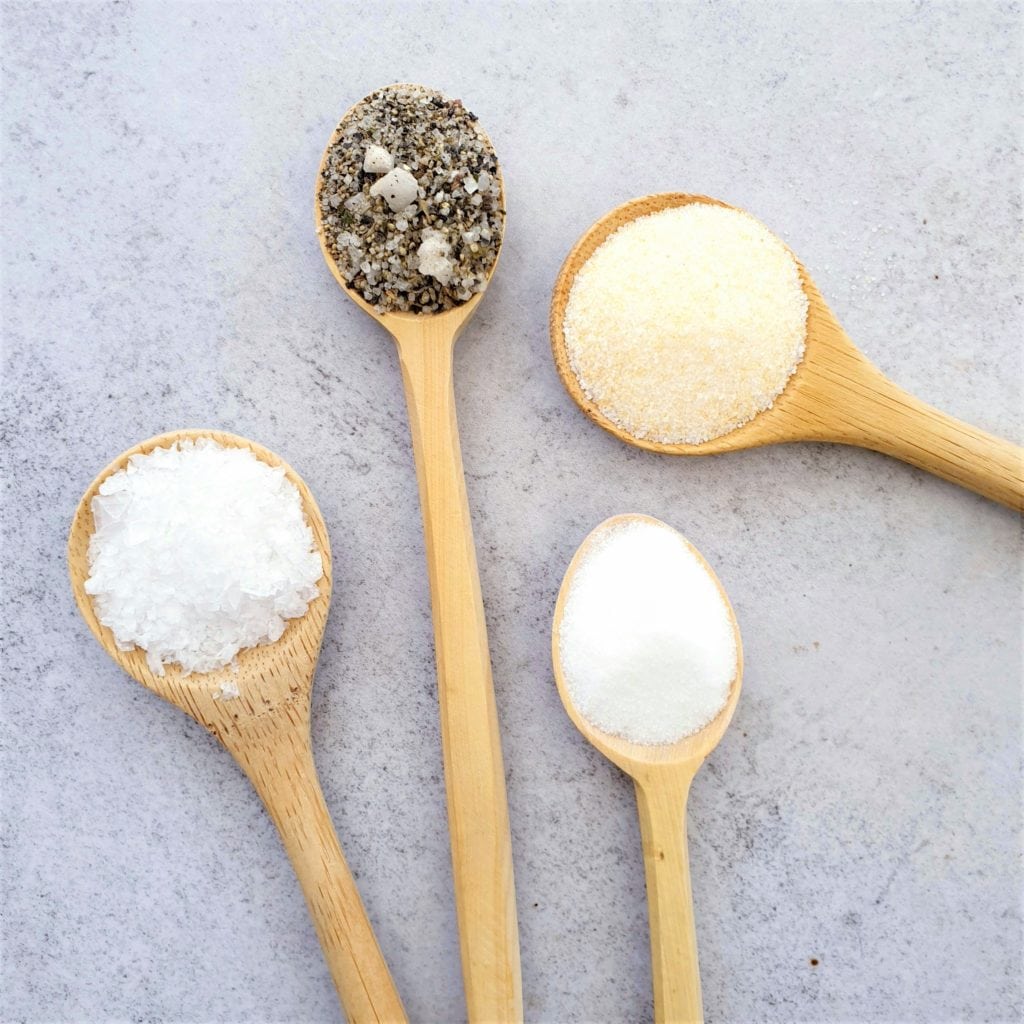
For the lowdown on using salt to properly season and enhance the flavour of your food, check out my Ultimate Guide on How to Use Salt. There is guidance about which salt to use when, salt alternatives, using salt when baking and even what to do if you add too much salt!
Beef Stock
This is for the gravy. Whilst the meat juices and fat will provide much of the gravy flavouring, to get a decently deep and beefy backnote in sufficient quantity, it will need some help.
I make the gravy with a stock pot or cube and boiling water. If using a cube, crumble it on with your fingers. If using a stock pot, I would only use half per 1 stock cube in the recipe – I find that they're very strong..
If you have beef stock on hand, then you could sub that in. It is much more common to but stock (broth) ready to go in the US.
If you only have chicken stock, on that basis that it is better than nothing, use it!
Note – this recipe previously specified to use beef stock concentrate but this is no longer available in the UK as Knorr have discontinued it.
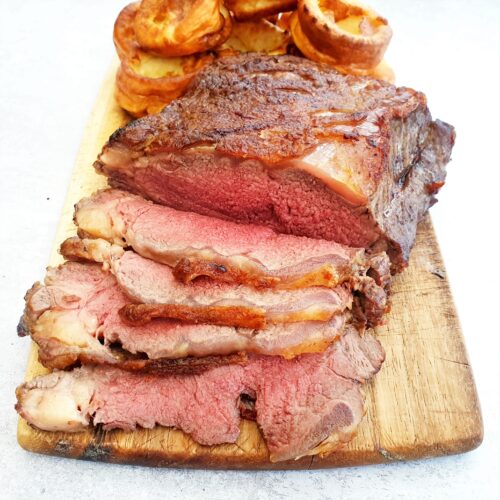
Cornflour
again this is for the gravy. The gravy is not made by throwing flour into the roasting tray and adding water and booze. This is such a last minute effort that rarely results in enough gravy for one person, never mind 4 that I am just not into it.
The cornflour route can be prepared while the meat is roasting and simply finished with the resting juices. The other benefit is the the gravy is gluten free meaning that anyone with allergies isn't screwed over by the addition of regular flour.
The important point to note with cornflour is that it must be mixed with water before being added. And it is best to add it a little at a time. How cornflour reacts varies with the wind so proceed with caution.
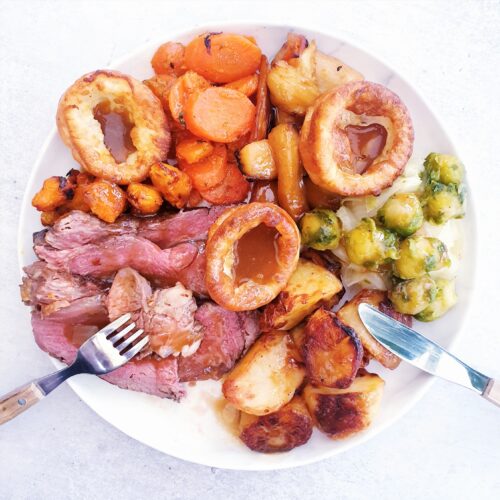
Be Flexible
This method of cooking which is essentially sear and then fast roast can be applied to other cuts of beef but not all. My cooking method for a boneless rib of beef is identical right down to the cooking time.
Almost every other cut of meat also gets the searing treatment. The browning achieved not only increases the flavour of the meat but helps with the gravy flavour and ensures a good looking roast. With a quick cooked medium meat, there isn't all that much time to colour the crust in the oven.
But for other cuts, the cooking time will change. Some, like brisket for example require a low and slow cook. Silver and top sides can be fast roasted but thats only a good idea if you like good chew to your meat (I do!). For a more tender roast, again these are better suited to low and slow.
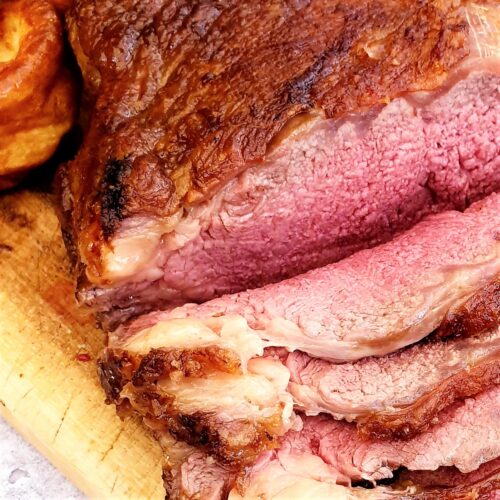
Of course you don't need to make the gravy. Or you can de-glaze the searing pan with wine than that water to make it a richer affair.
And then there are extra flavourings. I often sub the sea salt flakes which season the meat pre-cooking for garlic salt. If you are a mad pepper fan, that would be a good time to add some cracked black pepper into the mix.
Any other herbs and spices can also be added. Just be careful with them catching as your sear. If you are using a wet seasoning like a chilli paste, it would be worth applying this after the searing stage.
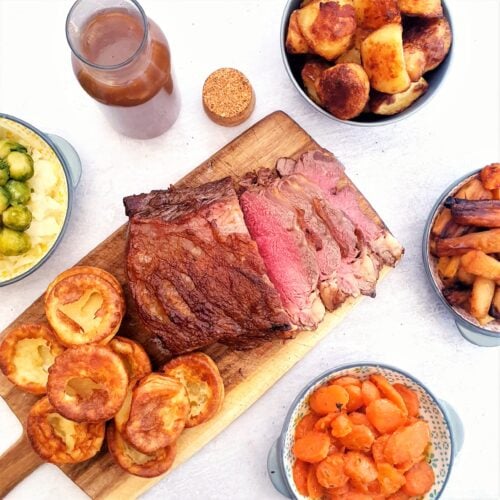
Make it Vegetarian or Vegan
I'm sorry. There is nothing I can do for you here.
Make it Allergy Friendly
This recipe is free from egg, dairy, gluten and nuts. Winner!
Please note that this recipe may contain other allergens not referred to above and any variations suggested have not been tested unless otherwise stated. For more information regarding any dietary information provided on this website, please refer to my Nutritional Disclaimer.
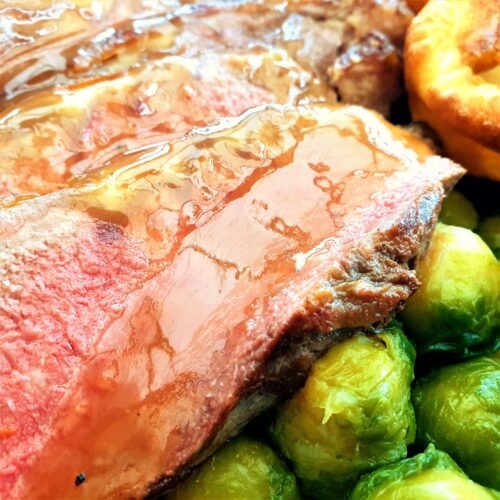
Equipment Notes for Roast Beef
You don't need anything significant to make roast beef.
It is my preference to sear the meat in a decently heavy based pan that can get stupid hot. A cast iron skillet is brilliant for this. A good griddle pan will also create great char and sear. But if you haven't yet invested in cast iron, you can just use any old frying pan!
A roasting tray is useful. You can use a baking tray but as the meat will give off some juices, it is best that whatever you use has some kind of lip. Other options include pyrex dishes, enamel roasters or even the cast iron pan you started with if it doesn't have a wooden or plastic handle.
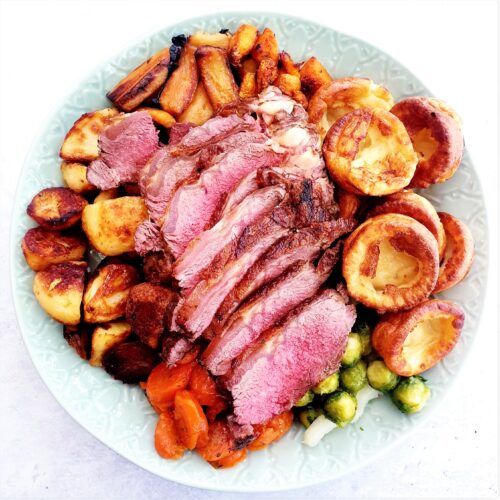
The important thing to ensure is that the pan isn't much bigger than the piece of meat. The further than the meat juices can spread, the more likely they are to burn onto the tray instead of helping you to create a lovely tasty gravy.
You will need some kind of small saucepan to make the gravy. I often use an enamel pan as I like how quickly I can control the heat. A silicone whisk is helpful to be able to whisk in the cornflour whilst not scratching your pan. And a simple sieve will help you out if you like your gravy onion chunk free.
A comprehensive list of the equipment used to make this recipe is included in the main recipe card below. Click on any item to see an example. There are no hard and fast rules so many items can be sensibly substituted to achieve the same results.
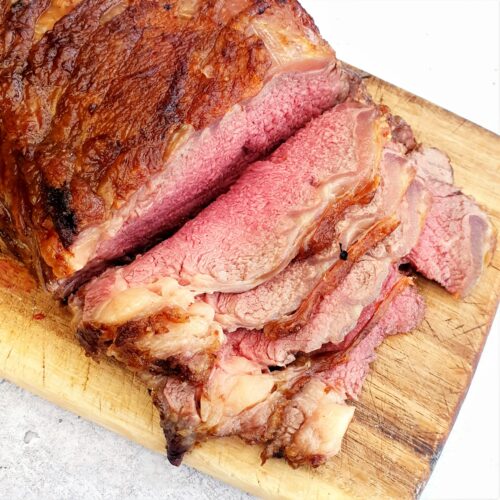
Get Ahead
This isn't a dish that lends itself terribly well to being prepared in advance. Don't get me wrong, you can reheat the cooked meat but boy will it be much much better cooked fresh.
The gravy can be started a little in advance. Mixing the boiling water, stock concentrate and cornflour into a thick but bland and largely colourless gravy. You can simply add the meat juices as they are given up by the beef during cooking. Then reheat and correct the seasoning just before serving. But honestly, this isn't going to save a great deal of time.
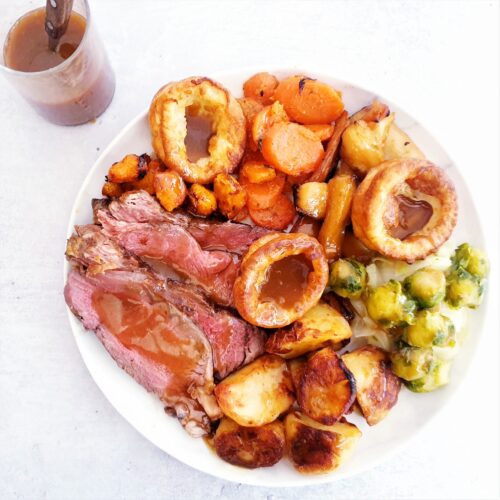
Leftover Roast Beef Sirloin & Gravy
The first thing that springs to mind is sandwiches. And yes, I'm including the gravy in that sandwich! Along with a good amount of butter and not an awful lot else.
If you don't go potty for roast meat and gravy sandwiches like I do, there are a million other options for ways to use up leftovers. One of my favourites is to make a totally different meal. So I'll replace the pork in my Korean Ramen recipe. Or slice it up and add to a Plain Chow Mein to make a beef stir fry (obviously!).
Leftover roast beef is a fab replacement of the corned beef in my Pan Aggie dish and the gravy can be watered down a little to replace the sauce/gravy element too
Or, you can toss the cold meat in the Mexican Spice Rub from my Pork Ribs recipe, fry it until crisp and serve in tortillas with Guacamole, salsa, salad and sour cream.
Don't miss my Leftover Roast Dinner Pizza which is the perfect way to use up all manner of leftovers from any Sunday roast or Christmas dinner.
There are tonnes of possibilities!!
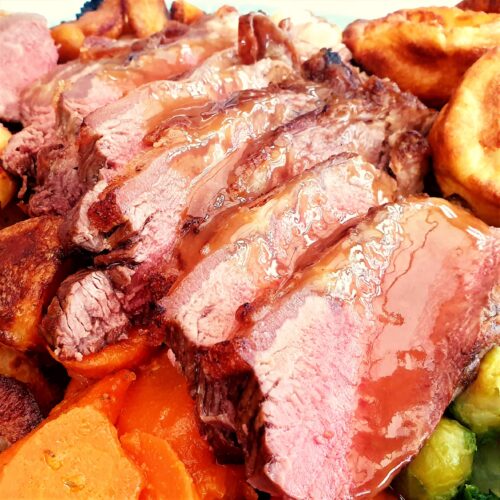
Roast Beef & Gravy Tips
Do not skip the searing stage. You will lose colour, flavour and mess up the cooking times. Trust me. If you've struggled to make great tasting quick roast beef before, this is likely why.
Don't skimp on the seasoning – this might be the other reason you've struggled before.
Do not waste any of the meat juices. I've included in the recipe every stage where I add juices to the gravy. If you see another opportunity – use it.
Do not skip the resting stage. This is where the meat relaxes, the juices are absorbed back into the meat and how you get a tasty and moist roast. 15 minutes minimum ok! I don't care how hungry you are!
Don't panic when you take the meat out of the oven to check it. You want it to look slightly less cooked than how you want to eat it. It will continue cooking as you rest it. I know that 20 minutes seems like a stupidly short cooking time, but it works, especially when you consider the searing kickstart.
I like my beef cooked to medium. If you like it to be rarer, cook it for a shorter time. Not too much shorter mind or the fat won't render. If you like it less pink then cook it longer. But bear in mind that 40 minutes will still likely be enough to get to "well done".
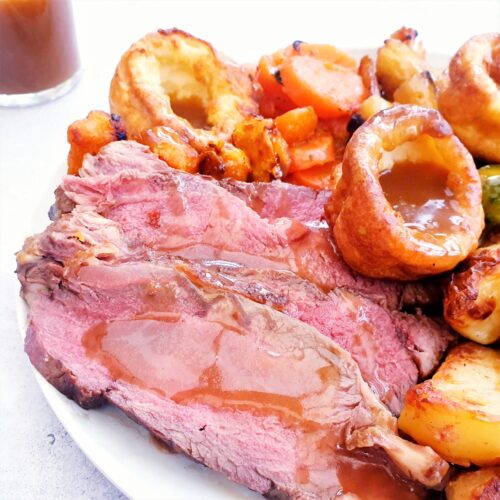
Don't forget to let me know in the comments if you try making this recipe – I want to know what you think and if you made any substitutions, how did it turn out?
Still Have Questions?
Simple! Just contact me and I will do my best to help as quickly as I am able. Head over to my Contact Me page, any of my social media channels or post a comment at the bottom of this page and I'll see what I can do.
Pin Roast Beef Sirloin & Gravy For Later
Hit one of the share buttons to save this page to your Pinterest boards so you can come back and find it at anytime!
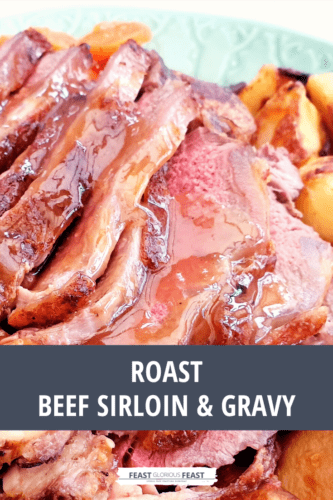
Keep Up to Date
Make sure you SUBSCRIBE to my newsletter and avoid missing out on any of my newest and bonus content. Don't worry, I promise not to spam you or bombard you too often. Plus you'll receive a copy of my FREE 7 Day International Meal Plan!
Also please don't forget to follow me over on my social media channels over at Facebook, Twitter, Instagram and Pinterest. I love to interact with my followers and I'd love you to share my content with your friends too.
More Meaty Main Meals
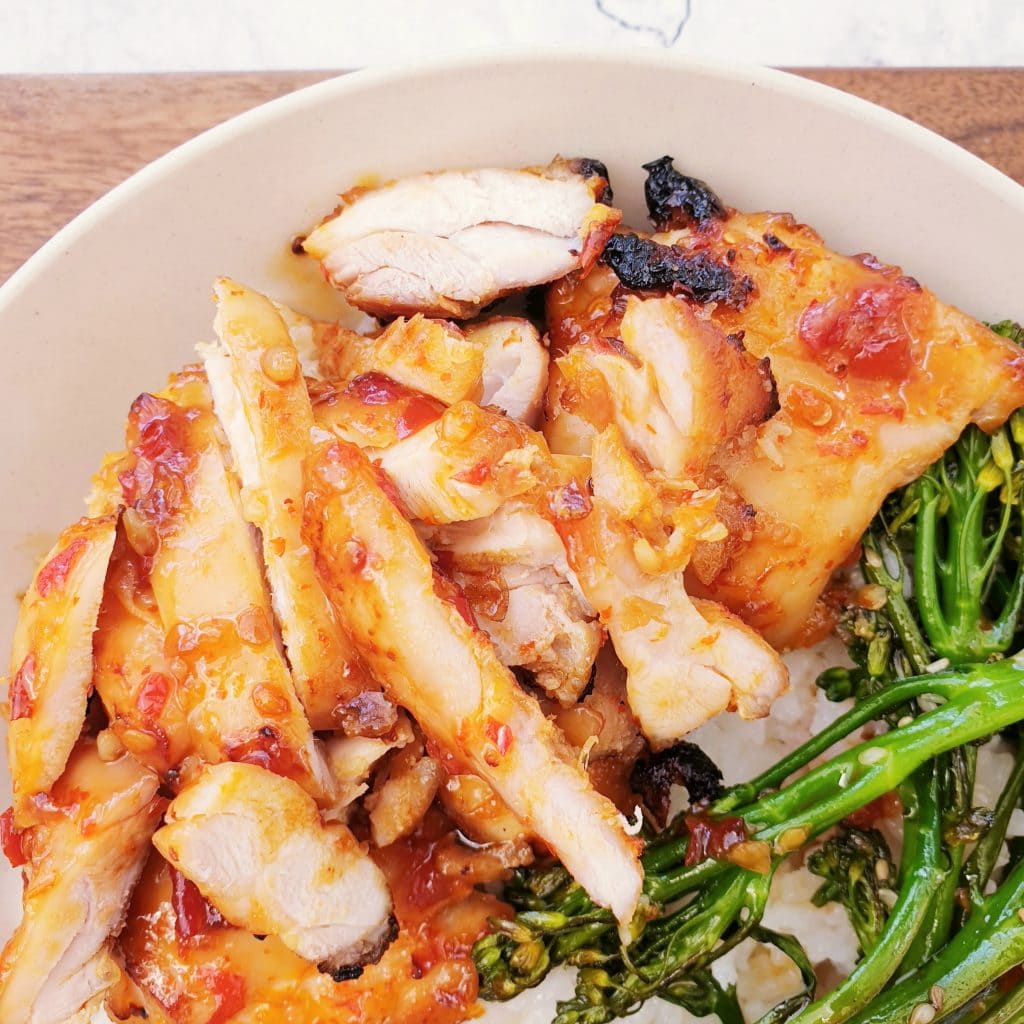

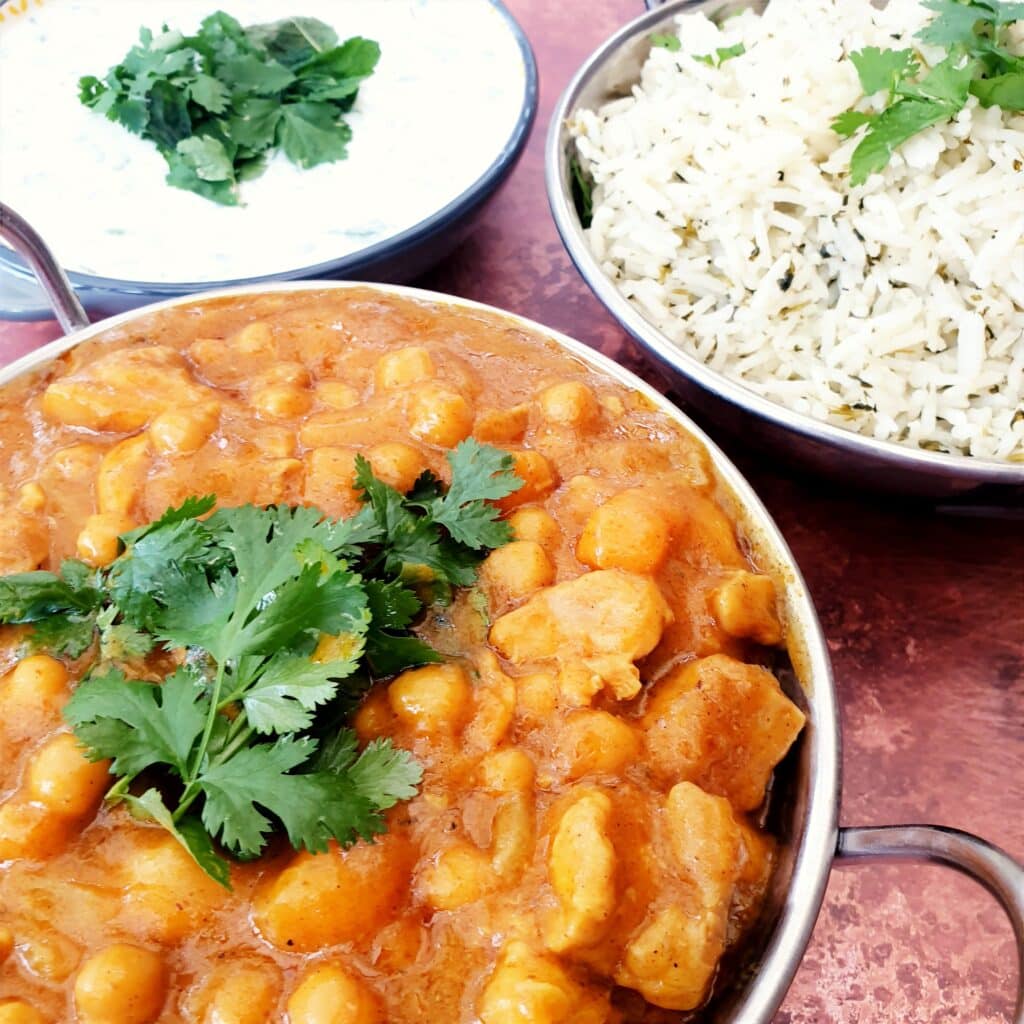
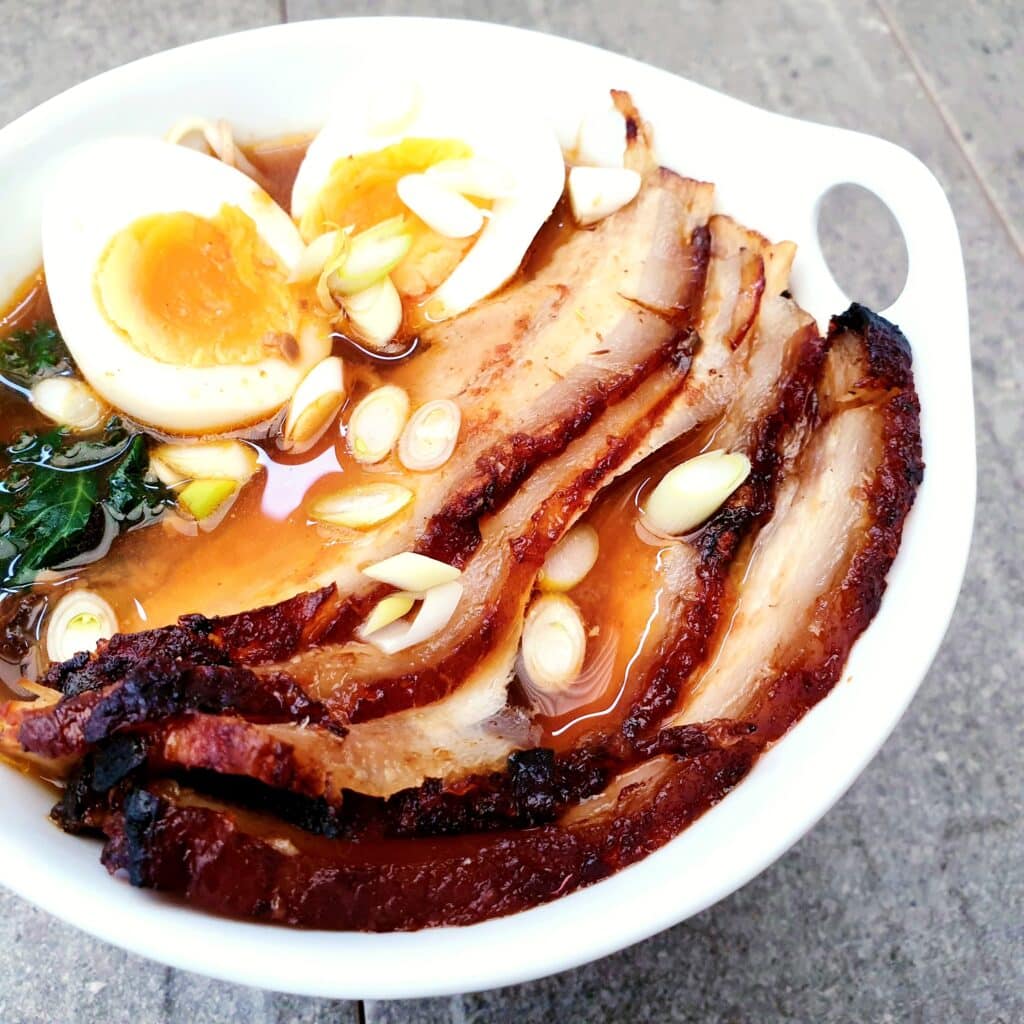
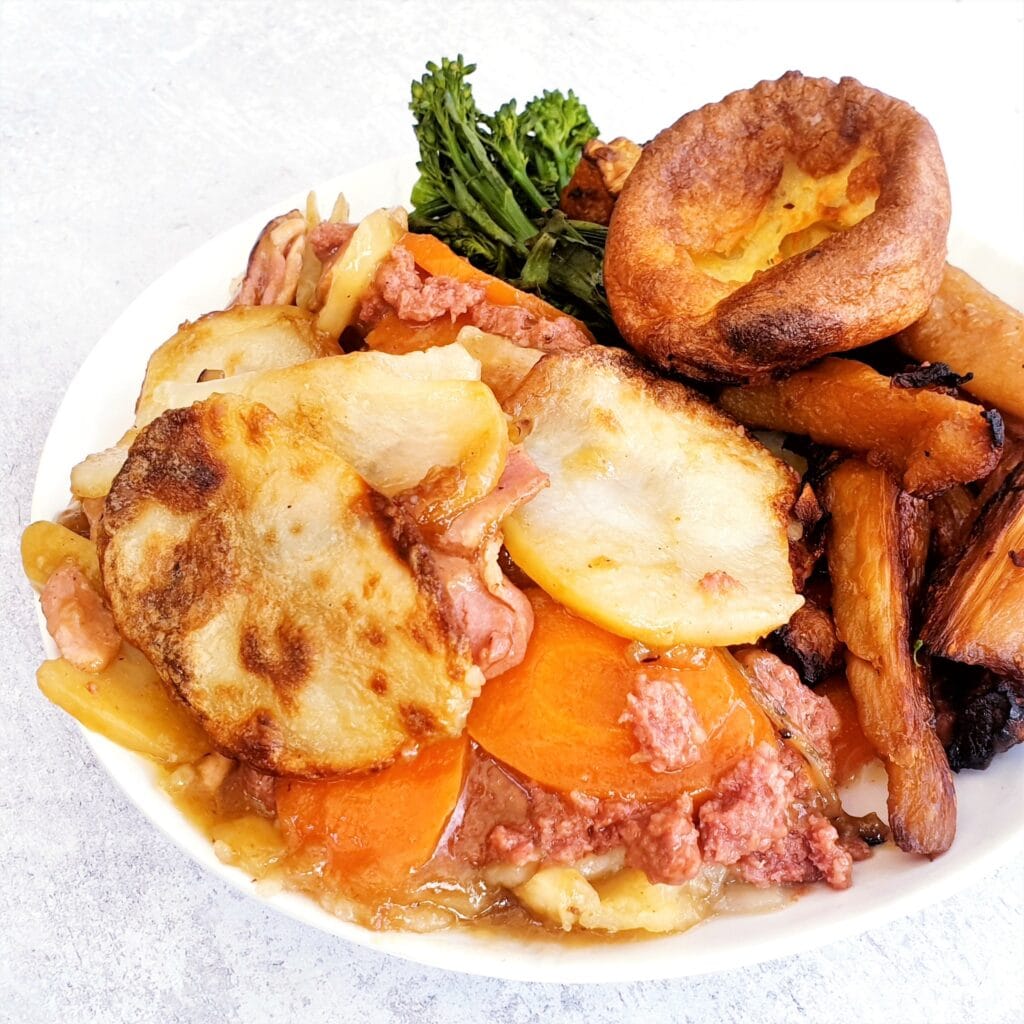
Corned Beef & Potato Bake
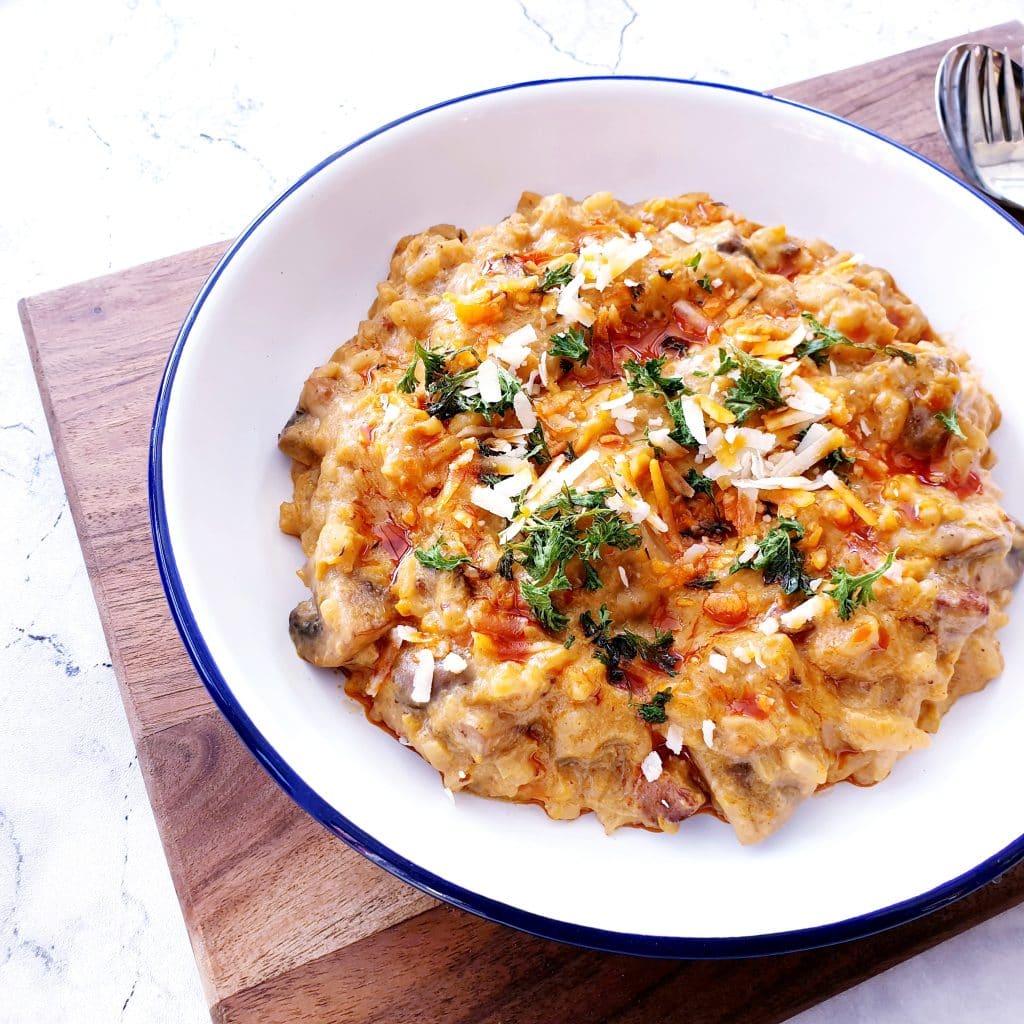
Risotto
The Recipe
Roast Beef Sirloin & Gravy
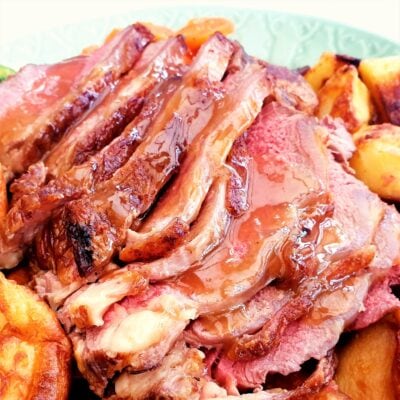
Roast Beef Sirloin is a quick cook and flavour packed joint which is ideal for Sunday Lunch. Or any meal! My Sirloin of Beef recipe serves 4, takes just 60 minutes and comes with perfect beef gravy too. Don't forget the Yorkshire puddings for the best roast beef dinner!
- 2 Onion
- 2 tbsp Vegetable Oil
- 1.125 kg Sirloin of Beef
- 2 tsp Sea Salt Flakes
For the Gravy:
- 1 Beef Stock Cube (Bouillon Cube)
- 4 tbsp Cornflour (Cornstarch)
- 1 tsp Sea Salt Flakes
-
Turn the oven on to 250°c | 230°c fan | GM 4 | 480°f (or as high as it will go).
-
Cut both ends off 2 Onions and slice them in half so that the rings show. Peel them.

-
Add 1 tbsp Vegetable Oil to a small roasting tray, add the onion halves and turn them over in the oil to coat.
-
Pop into the oven to start roasting whilst it continues to heat and you sear the beef.

-
Put a skillet or frying pan onto the heat to get hot. The thicker the pan, the higher the heat. It want's to be smoking within the next 3-4 minutes.
-
Prepare a 1.25kg Sirloin of Beef by drying it off with paper towel and trimming off any excess fatty pieces or gristle. Score the fat in a diamond pattern. Don't cut all the way through if possible.

-
Rub the meat with 1 tbsp Vegetable Oil and then sprinkle on 2 tsp Sea Salt Flakes .
-
Turn the heat up to full on your pan and put the beef in flesh down. Don't touch it for 3 minutes.

-
Use tongs to turn the meat over and sear the skin side for 3 to 4 minutes.

-
Take the onions out of the oven and spread them so they create a trivet for the beef to sit on.
-
Transfer the beef onto the onions and then put into the oven.

-
Cook for 20 minutes . You don't need to poke or baste it in this time.

-
Meanwhile start the gravy by putting the kettle onto boil and tipping any juices and crispy bits from the frying pan into a small saucepan.

-
Add roughly 50ml Water to the pan whist it is still on the heat. Give it 30 seconds boiling and then also scrape that into the saucepan. This ensures that you are wasting no beef flavour.
-
Add 600ml Boiling Water and 1 Beef Stock Cube to the saucepan and bring to the boil.

-
Meanwhile mix 4 tbsp Cornflour with enough water to make a loose paste.
-
Once the gravy is boiling, add the cornflour a little at a time whilst continually whisking it. Add more when it is boiling again and isn't thick enough after 20 or so seconds. Cornflour is a funny beast and you might need more or less to get your desired thickness. You will be adding a little more liquid so make it slightly thicker that you want it at this point.

-
You can turn the heat off and set aside the gravy until the meat is cooked.
-
Once the meat has been cooking for 20 minutes, take it out the oven and make a cut in the underside to see how well done it is. 20 minutes at the highest temp should be cooked medium but the thickness of the joint will make a difference. If it is not cooked enough for you, put it back in the oven. But do remember that it will continue cooking as it rests so please don't panic and overcook it.

-
Once cooked to your preference, take the beef and place it on a plate. Scrape all the onions and juices into the gravy saucepan. Don't scrape any burnt bits as these will make the gravy taste burnt too but crispy caramelised bits are great for flavour.

-
Move the beef back to the roasting pan and cover with foil and a tea towel. Set it aside for no less than 15 minutes .
-
With 5 minutes to go, heat the gravy back up whilst whisking. Check the seasoning and add circa 1 tsp Sea Salt Flakes depending on your taste.

-
You can sieve the onion out of the gravy at this point. You don't need to but some people don't like bits in their gravy.
-
When the meat is rested, pour any resting juices into the gravy, and serve both the meat and gravy. You can strain the gravy if you don't want the onion in it!

Important! If you have adjusted the serving size of this recipe, the cooking time will vary. A larger joint will take longer to cook and a smaller joint will take less. Don't forget that the tin size will also need to be adjusted.
Serving: 1 portion | Calories: 469 kcal | Carbohydrates: 13 g | Protein: 63 g | Fat: 17 g | Saturated Fat: 9 g | Cholesterol: 166 mg | Sodium: 2035 mg | Potassium: 1084 mg | Fiber: 1 g | Sugar: 2 g | Vitamin C: 4 mg | Calcium: 75 mg | Iron: 5 mg
Simply subscribe to the Feast Glorious Feast newsletter and I'll send you the link.
This post was shared with the #CookBlogShare group which is hosted by Recipes Made Easy, Lost in Food and a selection of guest hosts.
You can learn more in my guest host post and see the recipes that I chose to create an Easy Everyday Feast!
Source: https://feastgloriousfeast.com/roast-beef-sirloin/
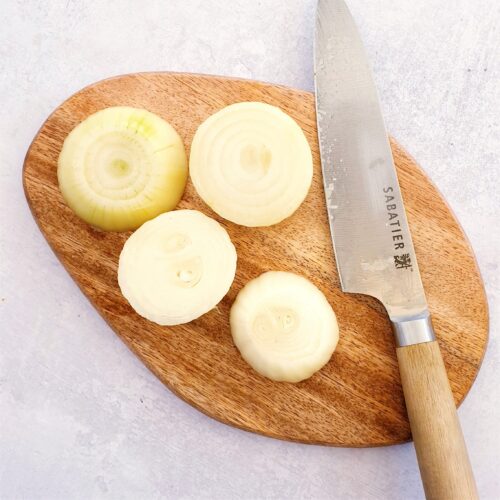
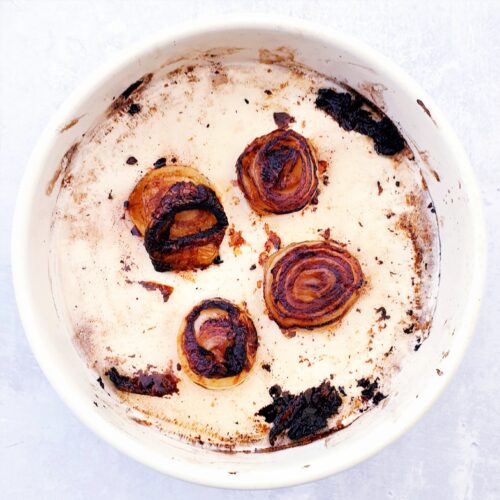
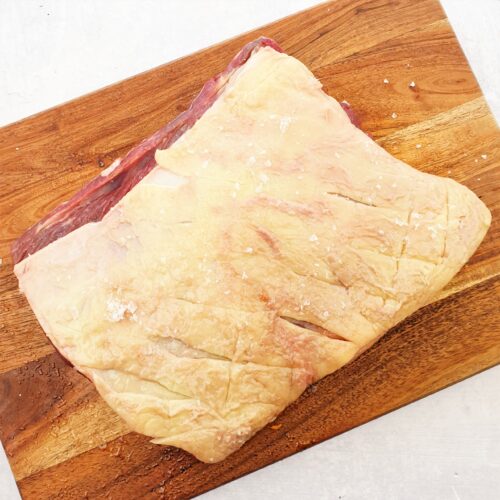
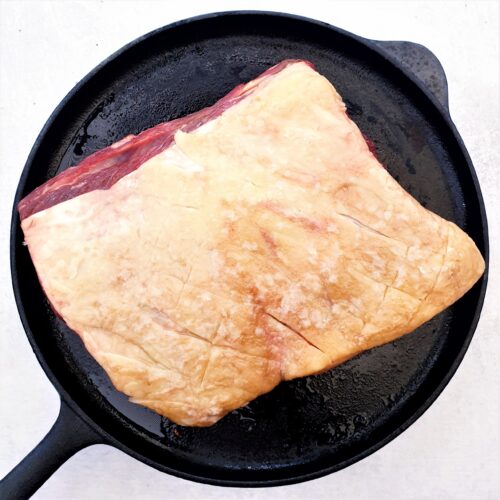
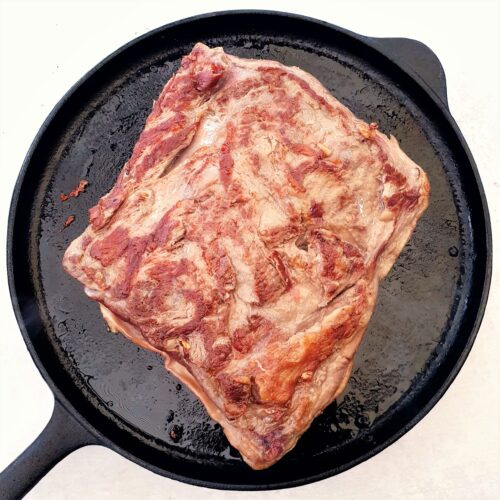
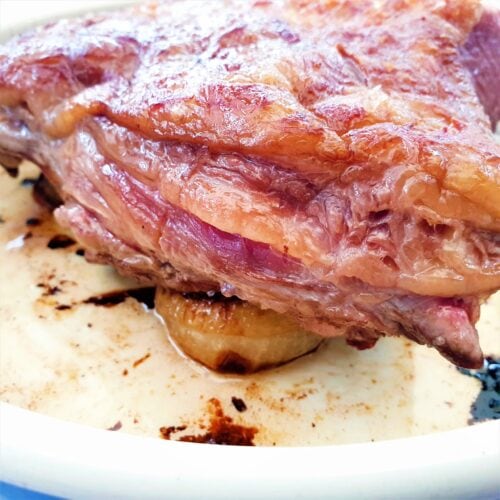
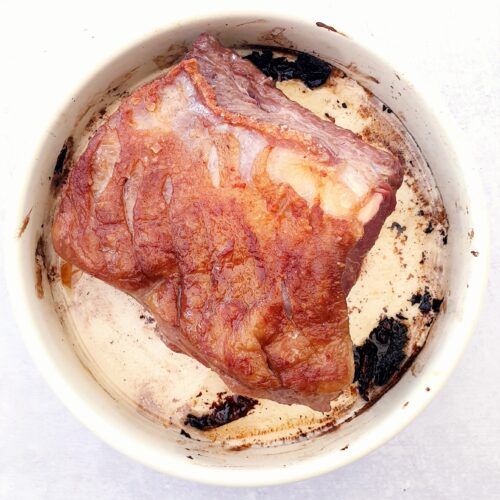

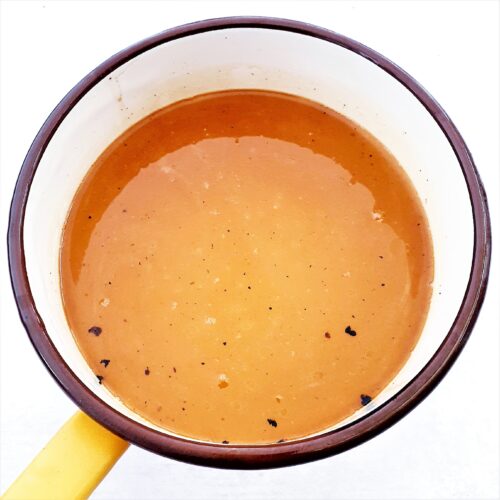
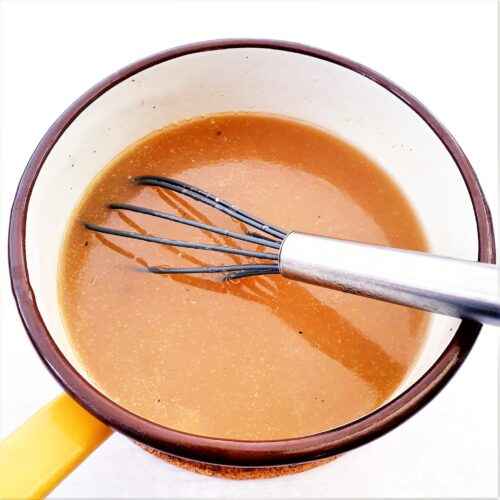
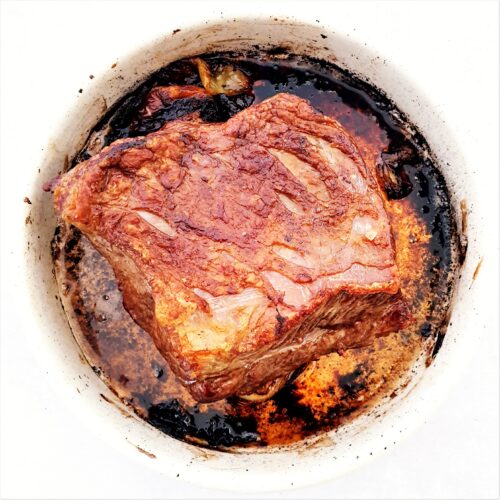
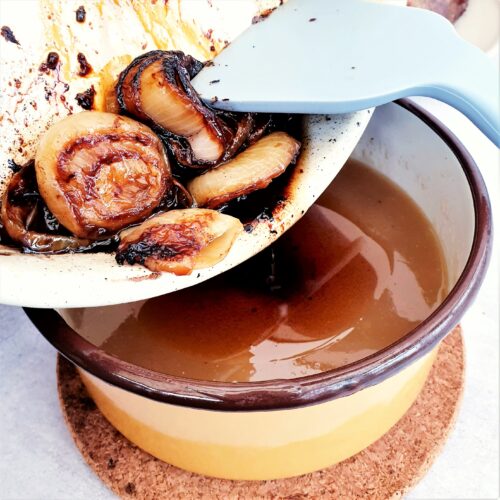
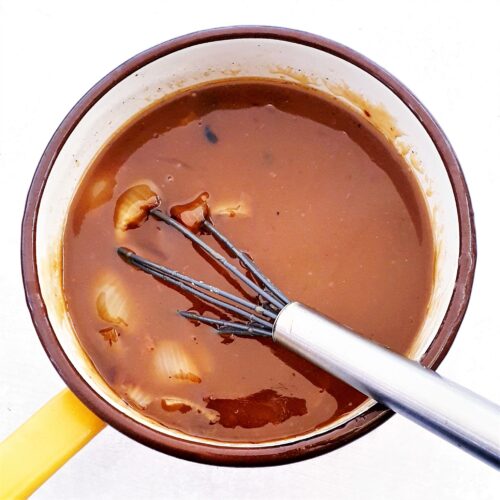
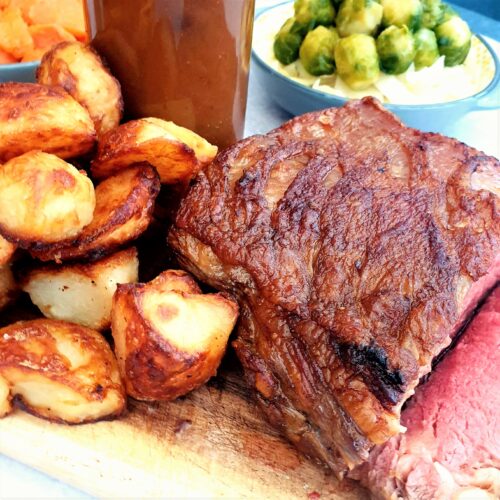
0 Response to "How Long to Cook 13kg Beef"
Post a Comment